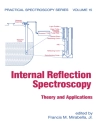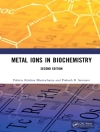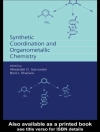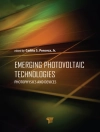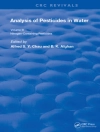This interdisciplinary approach combines the chemistry and engineering involved to describe the conception and improvement of chromatographic processes. The book covers recent developments in preparative chromatographic processes for the separation of ‘smaller’ molecules using standard laboratory equipment as well as the detailed conception of industrial chemical plants.
Following an introductory section on the history of chromatography, the current state of research and the design of chromatographic processes, the book goes on to define the general terminology. There then follow sections on solid materials and packed columns process concepts. Final chapters on modeling and determination of model parameters, the design and optimization of preparative chromatographic processes and chromatographic reactors allow for the optimum selection of chromatographic systems.
Essential for chemists and engineers working in the chemicals and pharmaceutical industries as well as for food technologies, due to the interdisciplinary nature of these processes.
Tabela de Conteúdo
INTRODUCTION
Liquid Chromatography – It’s History
Focus of the Book
How to read this Book?
FUNDAMENTALS AND GENERAL TERMINOLOGY
Principles of Adsorption Chromatography
Basic Effects and Chromatographic Definitions
Fluid Dynamics
Mass Transfer Phenomena
Equilibrium Thermodynamics
Thermodynamic Effects on Mass Separation
Practical Aspects of Parameter Determination
COLUMNS, PACKINGS AND STATIONARY PHASES
Column Design
Column Packings
Column Packing Technology
Column Testing
Column Maintenance and Regeneration
Guidelines for Choosing Chromatographic Columns and Stationary Phases
SELECTION OF CHROMATOGRAPHIC SYSTEMS
Definition of the Task
Properties of Chromatographic Systems
Criteria for the Choice of Chromatographic Systems
PROCESS CONCEPTS
Design and Operation of Equipment
Discontinuous Processes
Continuous Processes
Guidelines
MODELLING AND DETERMINATION OF MODEL PARAMETERS
Introduction
Models for Single Chromatographic Columns
Modelling HPLC Plants
Numerical Methods
Parameter Determination
Validation of Column Models
Modelling of SMB-Processes
MODEL BASED DESIGN AND OPTIMISATION
Basic Principles
Batch Chromatography
SMB Chromatography
Comparison of Batch and SMB Chromatography
CHROMATOGRAPHIC REACTORS
Introduction
Types of Chromatographic Reactors
Modelling of Chromatographic Reactors
Operation and Design of Chromatographic Reactors
Design Examples
ADVANCED CONTROL OF SIMULATED MOVING BED PROCESSES
Introduction
Model Predictive Control
State of the Art in Control of Simulated Moving Bed Processes
Online Optimising Control of a Reactive Simulated Moving Bed Process
Conclusions
APPENDIX
Sobre o autor
Henner Schmidt-Traub has gained 15 years of industrial experience in plant engineering. Since 1989 he has been Professor for Plant and Process Design at the Department of Biochemical and Chemical Engineering, University of Dortmund. His main areas of research focus on preparative chromatography, down stream processing, integrated processes, plant design and innovative energy transfer.



